Abstract
In a previous study of secondary lead smelter workers (males), a significant prevalence of low hemoglobin levels (less than 14 g/100 ml) was found; a statistically significant negative correlation between hemoglobin and zinc protoporphyrin was also detected. In the present study serum iron (Fe) levels and total iron binding capacity (TIBC) were included in the investigation of 111 secondary lead smelter workers and 37 nonexposed controls. The distribution and mean values of serum iron and TIBC were found to be in the normal range in the lead exposed workers; there was no significant difference when compared to the control population. There was no significant correlation between blood lead or zinc protoporphyrin and serum iron, TIBC and Fe/TIBC. A statistically significant negative correlation between hemoglobin and blood lead levels was found; the correlation between hemoglobin and zinc protoporphyrin reached a much higher level of significance. The results support the view that anemia (low hemoglobin levels) in lead exposed male workers is related to the heme synthesis inhibiting effects of lead, as reflected by elevated zinc protoporphyrin levels, and is not due to iron deficiency.
Full text
PDF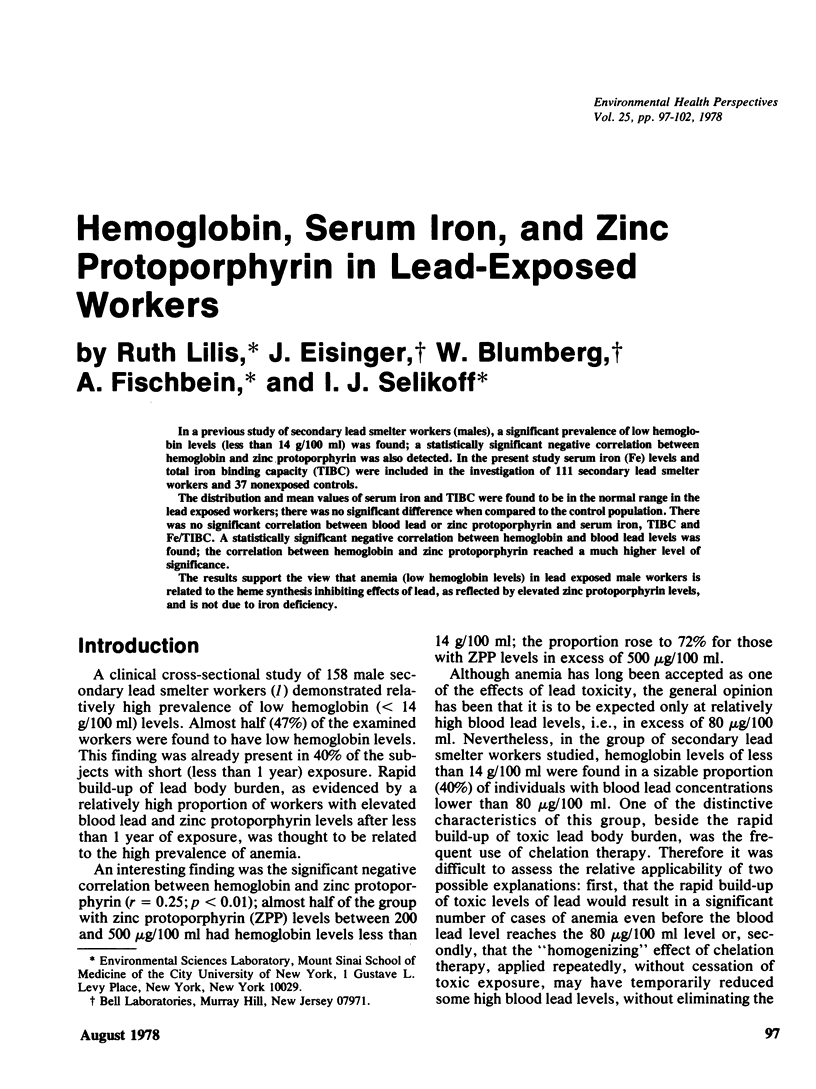
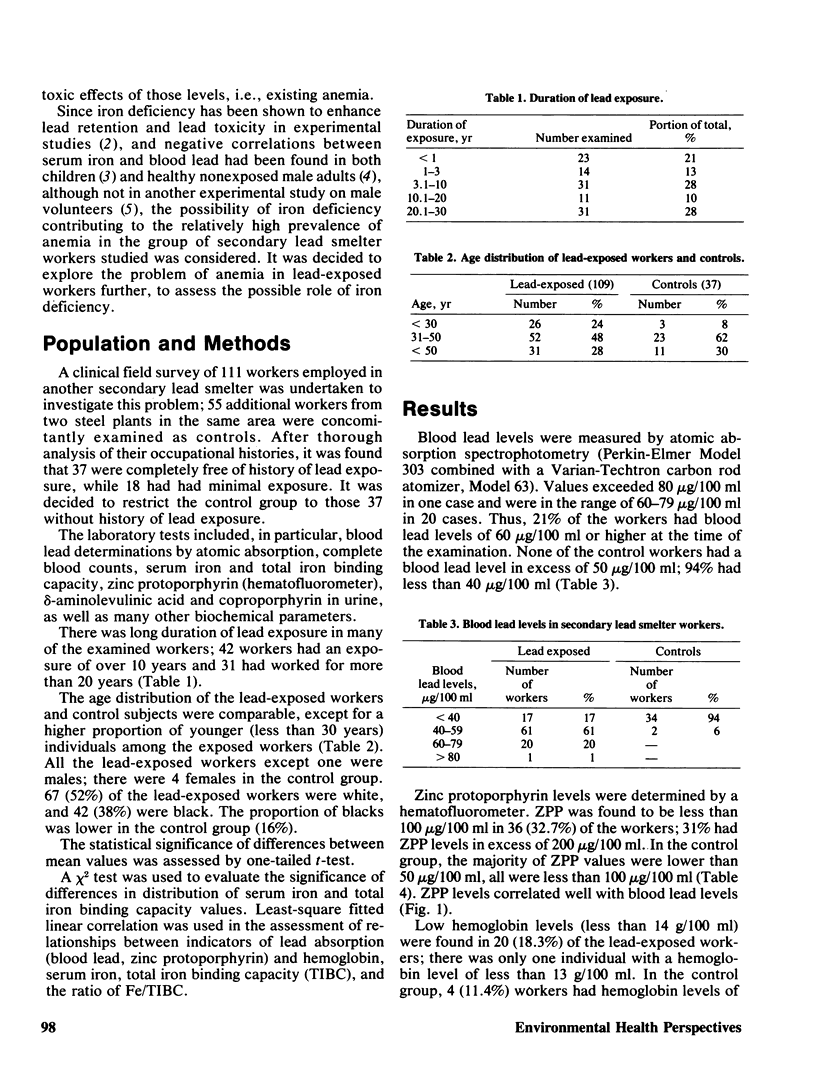
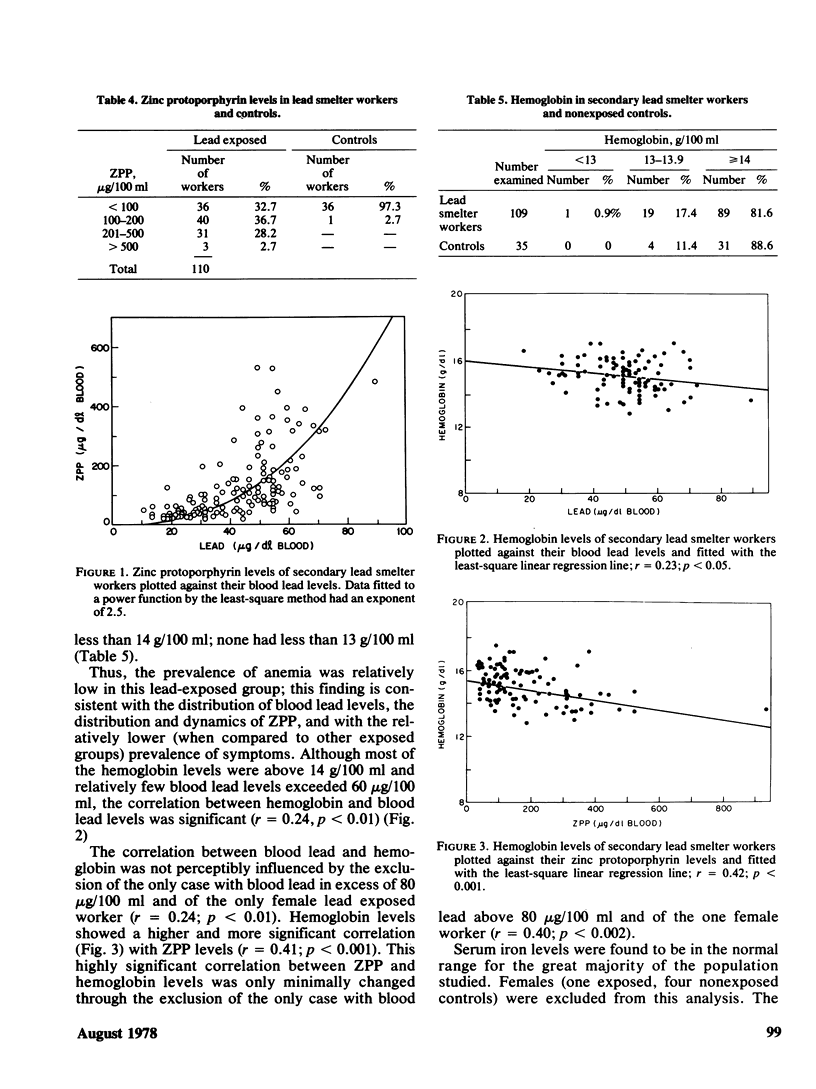
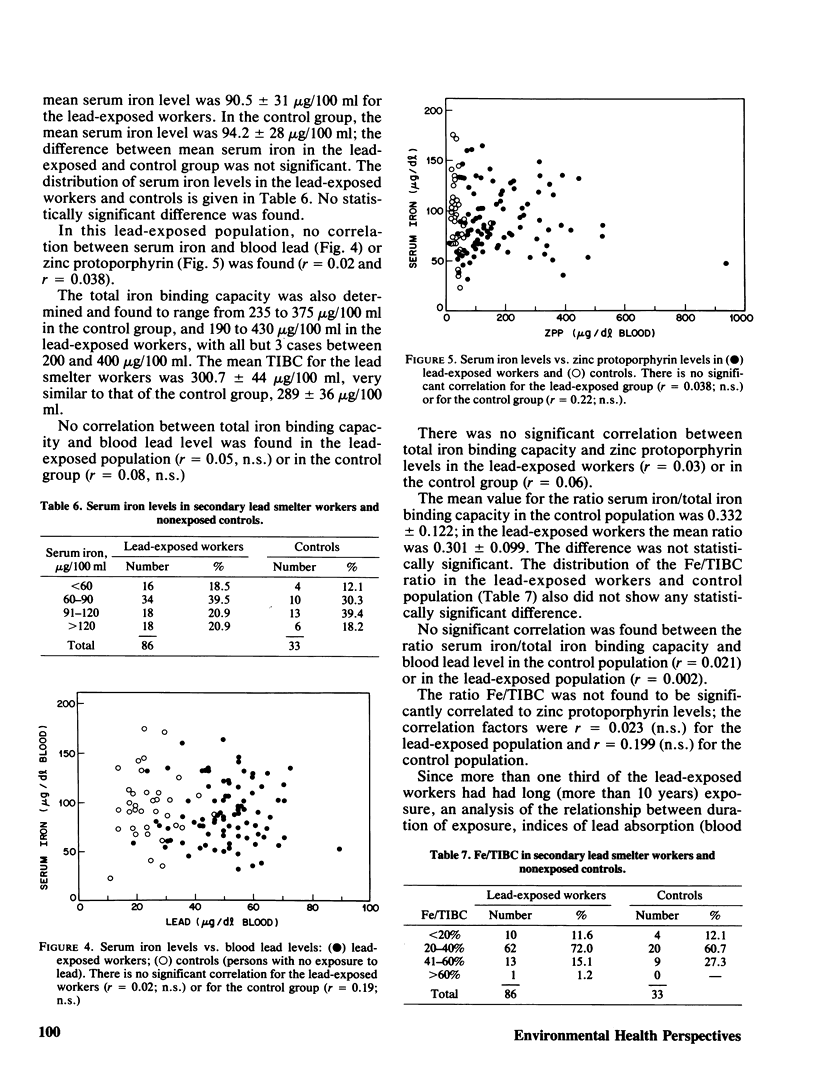
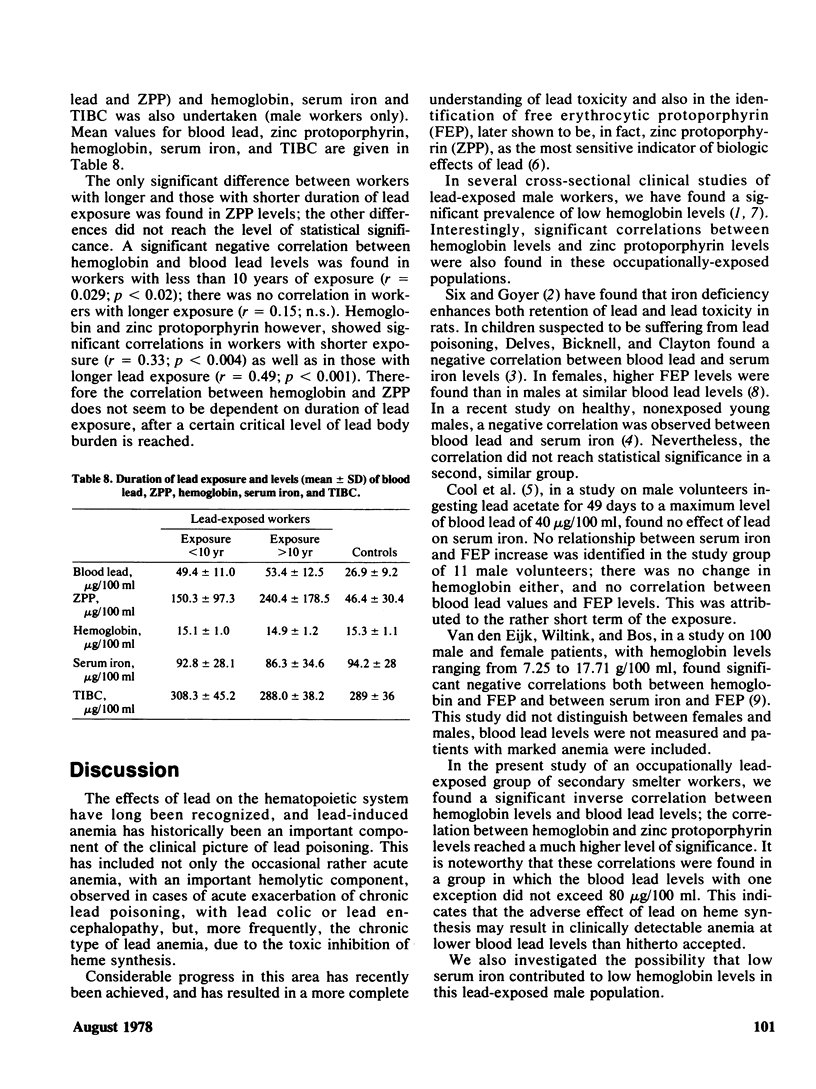
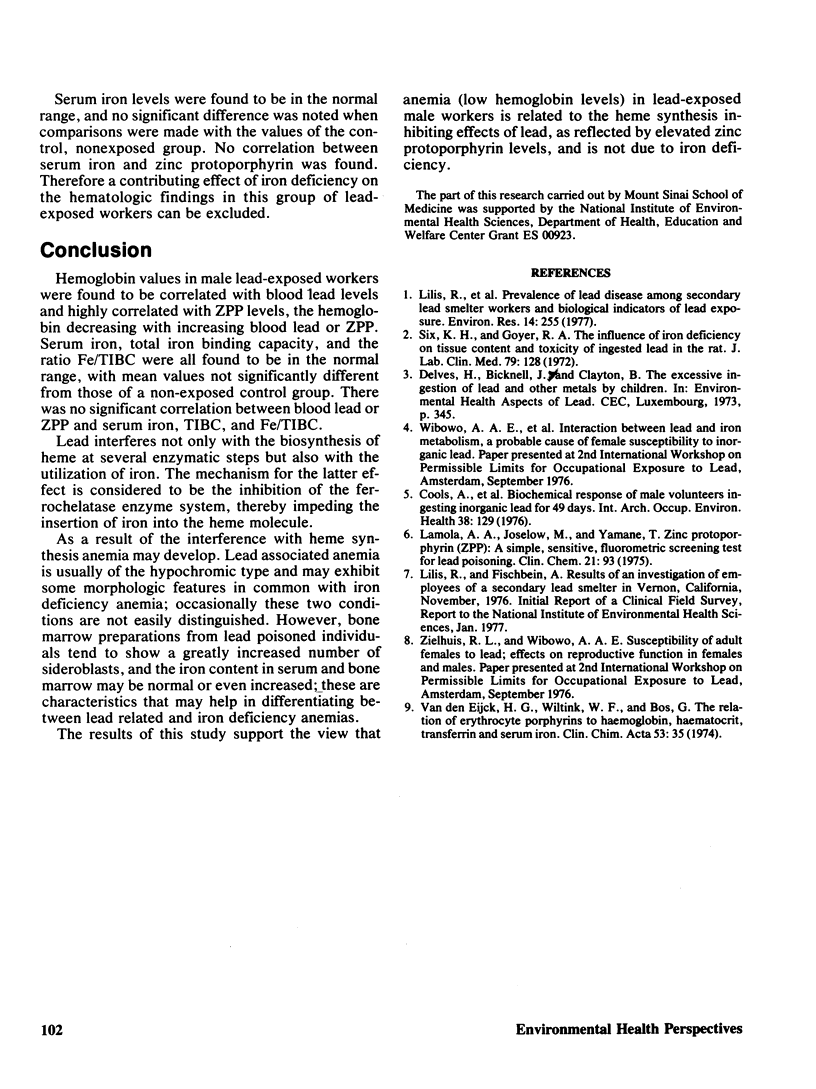
Selected References
These references are in PubMed. This may not be the complete list of references from this article.
- Cools A., Sallé H. J., Verberk M. M., Zielhuis L. Biochemical response of male volunteers ingesting inorganic lead for 49 days. Int Arch Occup Environ Health. 1976 Dec 15;38(2):129–139. doi: 10.1007/BF00378623. [DOI] [PubMed] [Google Scholar]
- Lamola A. A., Joselow M., Yamane T. Zinc protoporphyrin (ZPP): a simple, sensitive fluorometric screening test for lead poisoning. Clin Chem. 1975 Jan;21(1):93–97. [PubMed] [Google Scholar]
- Lilis R., Fischbein A., Eisinger J., Blumberg W. E., Diamond S., Anderson H. A., Rom W., Rice C., Sarkozi L., Kon S. Prevalence of lead disease among secondary lead smelter workers and biological indicators of lead exposure. Environ Res. 1977 Oct;14(2):255–285. doi: 10.1016/0013-9351(77)90037-8. [DOI] [PubMed] [Google Scholar]
- Six K. M., Goyer R. A. The influence of iron deficiency on tissue content and toxicity of ingested lead in the rat. J Lab Clin Med. 1972 Jan;79(1):128–136. [PubMed] [Google Scholar]
- van Eijk H. G., Wiltink W. F., Bos G. The relation of erythrocyte porphyrins to haemoglobin, haematocrit, transferrin and serum iron. Clin Chim Acta. 1974 May 31;53(1):35–42. doi: 10.1016/0009-8981(74)90348-9. [DOI] [PubMed] [Google Scholar]


